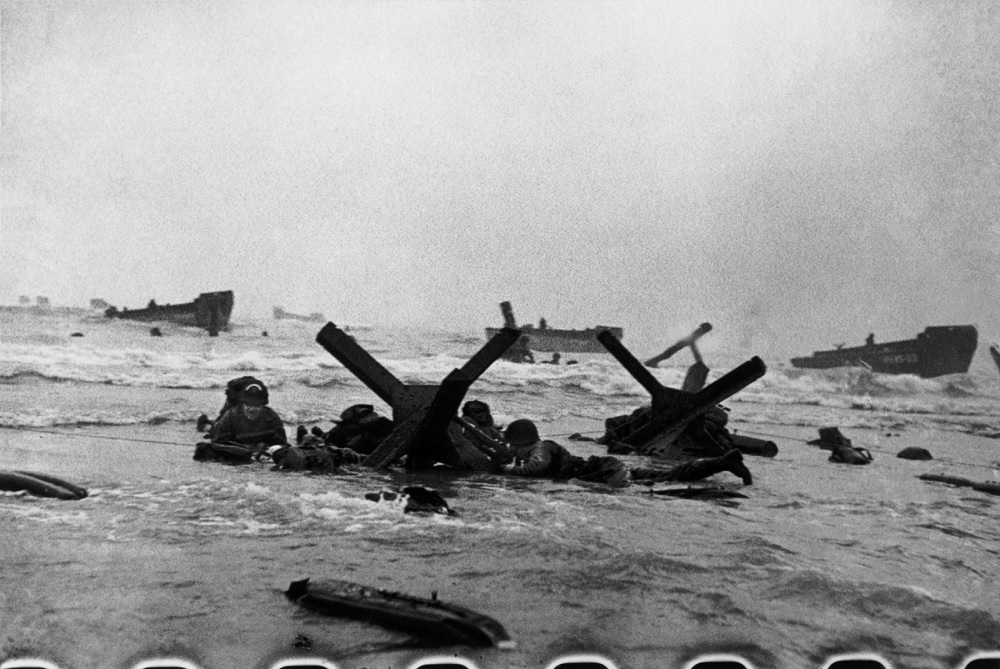
Believe it or not, this is a photo of the first wave on Omaha Beach. Can you smell the seawater?

Believe it or not, this is a photo of the first wave on Omaha Beach. Can you smell the seawater?
How about an early morning landing by silent gliders
just behind the bluffs, followed by a
mass parachute drop, followed by landing craft, sans bombardment?
Intriguing but no.
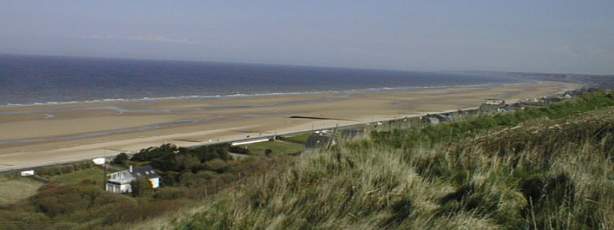
How about a "worms not waves" approach, where you land on places other than
strongpoints like Vierville draw? You could land substantial intact forces, add
tanks, then surround and clear out the strongpoints.
I don't know. On June 6 it worked out that some avoidance of
strong positions did occur.

When you watch Saving Private Ryan and see soldiers being hopelessly
cut down in a hail
of bullets the moment the ramp goes down your instinct will tell you that they need
shields. What about interlocking shields, like a Roman tortoise?
A portable frame, shields, sandbags? No.
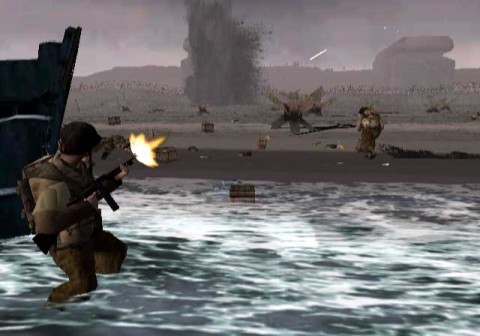
What kind of range did those Thomspons have?
What about your brave and rather obvious plan to shoot back at the enemy? Well
Do you get seasick? Have you ever seen that thing where you put your forehead on a broom on the ground and spin your whole body around it a few times, then walk somewhere? Try that, then point your broom at a distant target, or try to do anything useful. Well, before you do that, wake up very early in the morning. Just before your broom trick go into the shower, with cold water. You have boots, jacket, helmet, gas mask, miscellaneous item (1940s radio, bangalore torpedos, wire cutters), your weapon, ammunition containing lead, and grenades. Now waddle through some water. Then you can do your broom trick.
Of course you're in the Army, so you have to follow orders. Where is Captain George Stanford? What are our ord - is that Smith over there in a bloody mess? There is the matter of enemy fire, including the blasts of sound waves from shells.
Note that you may die in the next few minutes. We can't really imagine what
that's like. Well, I live on the 17th floor of an apartment building
(close to frequent fireworks displays by the way),
and I can look out and ponder what it would be like to be tossed over the side.
Imagine that - no, let's make it eighth floor or so.
In the next few minutes you could get tossed over and die, or
be painfully injured, or be painfully injured and die over time, or you might be fine.
But try not to think about that.
Your good buddy Gerald might experience the same thing in the next few minutes too.
But try not to think about that.

What about that well-protected gun facing east?
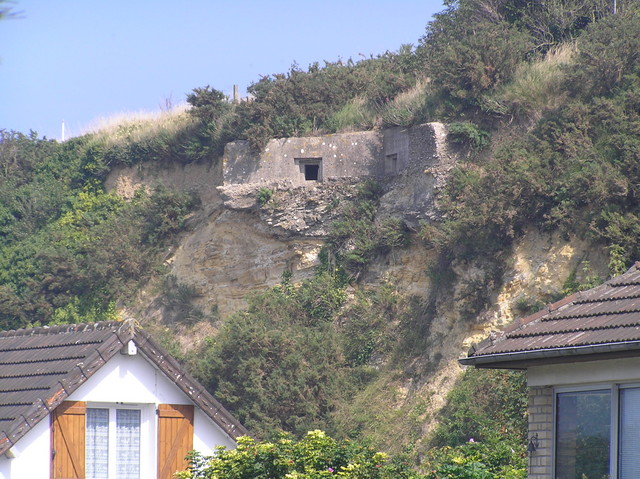
Don't be fooled by Saving Private
Ryan and the documentaries -
for the first wave at low tide (the tide moved in quickly)
there was a distance of 1000 feet
between the shore and the sea wall, not counting the distance between
the landing craft and the shore, and the climb up the bluff.
German defenders were comfortably in their concrete pillboxes
(or sandbagged pit), presenting a small target and ripping away with their
MG42 machine guns with their famously high rate of fire.

That's some cold water. Is anybody shooting?
What about bringing infantry weapon x?
They brought infantry weapon x during the first or second wave.
"Where's your B.A.R.?"
Rifle grenades?
Snipers? Nah.
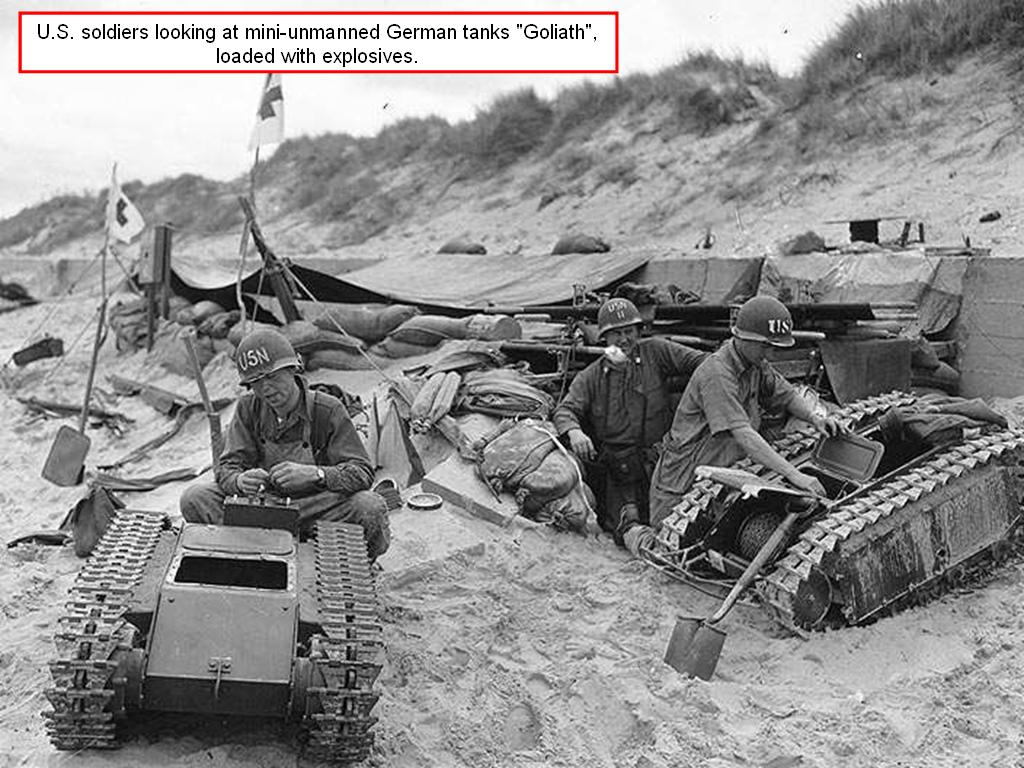
Instead of just sending bodies of frightened young men toward the enemy defenses
against their will,
what about sending unemotional mechanical devices trundling toward the enemy?
It isn't quite as crazy as it sounds. The Germans used wire-controlled Goliaths, small
treaded vehicles that were sent to enemy tanks to blow them up. They even
had them in Normandy. However, there are issues including water, how they
would be controlled (automatic?),
and Goliaths were actually vulnerable to small arms fire. What would they do anyway?
This would certainly have the German defenders scratching their helmets.
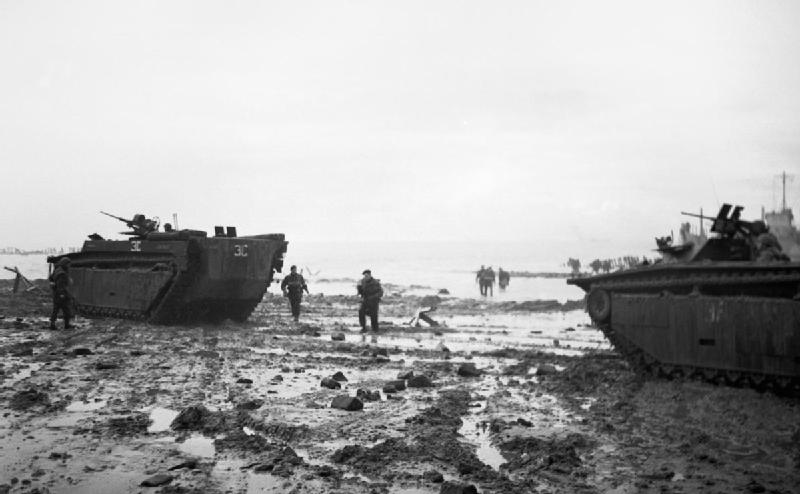
Tracked landing craft, such as these buffalos, could have been useful.
They were used in the Pacific theatre at the same time, and were used
later in Northwest Europe, but they were not used on D Day. Note that
there were beach obstacles, these are not tanks, and the defenders had guns
that could deal with them.
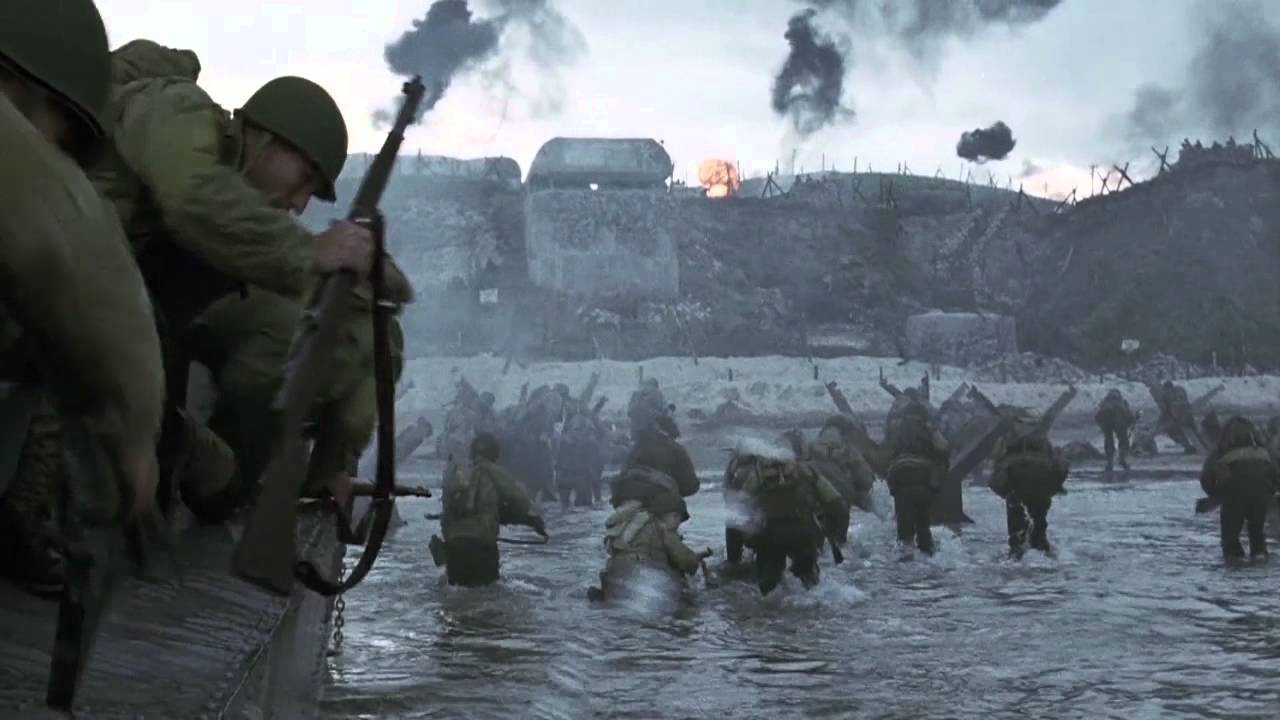
What about a bazooka, fired from the relative protection of a landing craft?
This was the idea that got me started on all this.
It makes sense when you watch Saving Private Ryan.
One man in a steady posture shooting bazookas, with an assembly line team in support instantly providing
replacement bazookas, plus some targeting tips.
In fact, how about a "multibazooka" with four or five bazaoka tubes together,
and some kind of trigger
mechanism? There would be a steady stream of bazooka rounds headed
toward the enemy bunkers.
In Italy they used to rig up multibazookas on jeeps.
No, it's effectively too distant.
How about multiple rocket launchers on the landing craft?
You can easily find footage of boats shooting
rocket barrages during D Day. What about shooting rockets direct fire,
and having these vessels go in with the landing craft?
Sherman tanks sometimes had
launchers for 60 rockets mounted on top.
So how about every x landing craft has this 60-rocket
launcher mounted above in a fixed position, for a wild and crazy direct fire
bombardment in the approach to the beach?

communication problems
This article in The Atlantic fleshes out the disaster of the first wave at Omaha Beach.
Here is a recent BBC article that answers some questions I had about tanks.
Omaha Beach NEW wikipedia. Good information.
This
is a YouTube video showing the beach.